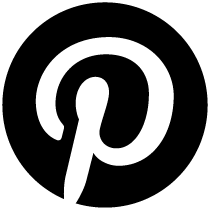The Unsettling Embrace of Hannah Levy
Body anxiety, betrayal and ‘flesh cages’ in the work of the NYC artist, the subject of a solo presentation at Frieze New York 2025
Body anxiety, betrayal and ‘flesh cages’ in the work of the NYC artist, the subject of a solo presentation at Frieze New York 2025

Ripe and bulbous, or spiky and penetrative, Hannah Levy’s works exist in a state of tension. Silicone is stretched, continuously; glass is frozen in time; metal acts as a support or a directional vector. The works continue to evolve once on display: they accumulate dust and residue through touch, their physicality mediated by their environment. Levy likens this to sweaty skin sticking to a leather car seat on a hot day.

Some of her works look like they are about to ricochet across the room. Sometimes they do – worn by dancers as appendages. In 2023, at ICA Philadelphia, Sigrid Lauren activated Levy’s sculptures with choreography, the performers balancing on metal stilts with talons. In a 2017 performance at MoMA PS1, dancers wore cumbersome silicone and latex costumes, and jackets with extra-long arms.

But even without the dancers, in Levy’s hands things – floor lamps, chandeliers, chairs, umbrellas, handrails – all teeter on the verge of animation. Organic forms materialize: a super-sized peach pit or a giant piece of floppy asparagus. Object as subject, form over function, industrial versus organic: binaries collapse under Levy’s deft touch. Rather than working from drawings, the artist begins with a small set of images that she collages together into something entirely new. ‘If I were to show you my desktop right now, it’s a jumble of images I’ve collected,’ she says. ‘A weird desk, a chrysalis and a ladder.’
The idea of body anxiety is so intrinsically part of the human condition.
Her sculptural pieces are the result of an idiosyncratic combination of fabrication practices and traditional craftsmanship, from glass blowing to welding. Generally, Levy combines two materials and uses their interactions as the point of push and pull that energizes the work. For her upcoming presentation with Casey Kaplan at Frieze New York (her first ever solo stand), Levy’s sculptures cling to the walls in suspense, teasing gravity.
‘My initial attraction to art came through making,’ she explains in our recent conversation. ‘Although my mom wasn’t practising as an architect during my childhood, she was very supportive of me and my brother expressing creativity through making things.’ Levy, who grew up in New York City, recalls a photograph of herself at three years old wearing a dress she had made by pinning fabric to her body. Aged six, she made a wooden stool using a hand saw in art class. She later did a stint in a metal foundry for a summer job during college. In these environments, Levy was often the only woman in the room. ‘It helps that I’m six feet tall,’ she says with a laugh.

Levy greets me over video, wearing a black hoodie with her wavy, dark hair pulled back, framing her thick eyebrows. She has been making art publicly for a decade, and with every new work the concept of body anxiety arises again. ‘The idea of body anxiety is so intrinsically part of the human condition,’ she says. ‘We might want to think of ourselves as cerebral beings, but we are just humans, walking around in vulnerable flesh cages. Our bodies can betray us.’
That ‘betrayal’ manifests in Levy’s fascination with crutches, calipers and other medical equipment rendered in fleshy tones and distorted shapes. ‘It’s been a conceptual element of my work since college,’ she says, ‘but the adaptive elements that I’m inspired by came to the fore when my dad passed away a few years ago. He had ALS, a degenerative disease that caused paralysis in the last year of his life.’ As Levy and her family cared for her father, she developed a new relationship with handrails and harnesses, lifting aids and supportive devices. ‘I wouldn’t call it inspiring, and it certainly wasn’t at the time,’ she says, ‘but it’s another element that I incorporated into my understanding of body anxiety.’

This brought her interrogations of design into focus: how spaces do or do not adapt to different bodies. How the possibility of disability is always waiting in the shadows. ‘It’s an odd thing to think of the disabled as a minority group,’ says Levy. ‘Or in architecture and design, to think that not every space needs to be accessible because it’s not all of us.’ Levy has experienced the crux of such denial first-hand: ‘As a culture, our eventual frailness is scary and something that we don’t want to admit.’ So many of the structures that we create are based on the idea of self-preservation, the drive to conceal our own limitations. When a handrail juts out of a wall, it is a subliminal confrontation; when steps are cut into a slope, they are a passive aid for even the most able bodies.

‘One of the things that I like to play with,’ she says, ‘is the way in which the objects and architecture we live in and around reflect larger societal values.’ Illness and death are taboo in a culture preoccupied with the proverbial fountain of youth, and she observes that our design instincts often follow this. This paradigm is not her sole focus, but it underscores Levy’s work. There is something confrontational about her forms; they are both vulnerable and exposed. They embody these conflicted architectural spaces as well as being Frankensteined characters who are as defined by their inherent personalities as by the more hefty conceptual ideas they carry. ‘Some are funny, some are sexy, some are goofy,’ says Levy, who starts each object with a specific moment of tension in mind and lets the materials dictate how they want to act it out. ‘This often plays off the very rudimentary sculptural concept of two materials interacting with one another.’ It’s a simple idea in which the artist sees endless potential.

Limp or erect, Levy’s disfigured forms could be at home in a David Cronenberg film, yet her references are less in line with the father of body horror and more in the spirit of what he was preoccupied with: the body and the structures that hold it. The body as a conduit for motion, and the objects we build that respond to it. For Frieze New York, Levy is working on three multi-armed wall works made of stainless steel and glass, an extension of her recent wall-mounted clawed hands holding glass bubbles. There will also be two freestanding sculptures. As usual, variations on themes from across her practice congeal. ‘I’ll bring them back again and again until I feel like they’re settled,’ she says. ‘Maybe they will never be settled.’
Casey Kaplan is presenting a solo stand of Hannah Levy at Frieze New York 2025 (Stand B11).
Further Information
Frieze New York, The Shed, 7 – 11 May, 2025. Tickets are on sale – don’t miss out, buy yours now. Alternatively, become a member to enjoy premier access, exclusive guided tours and more.
Frieze New York is supported by global lead partner Deutsche Bank, continuing its legacy of celebrating artistic excellence on an international scale.
A dedicated online Frieze Viewing Room will open in the week before the fair, offering audiences a first look at the presentations and the opportunity to engage with the fair remotely.
Main image: Hannah Levy, ‘Bulge’ (installation view), Massimodecarlo, London, 2024. Courtesy: Massimodecarlo. Photo: Robert Glowacki


















